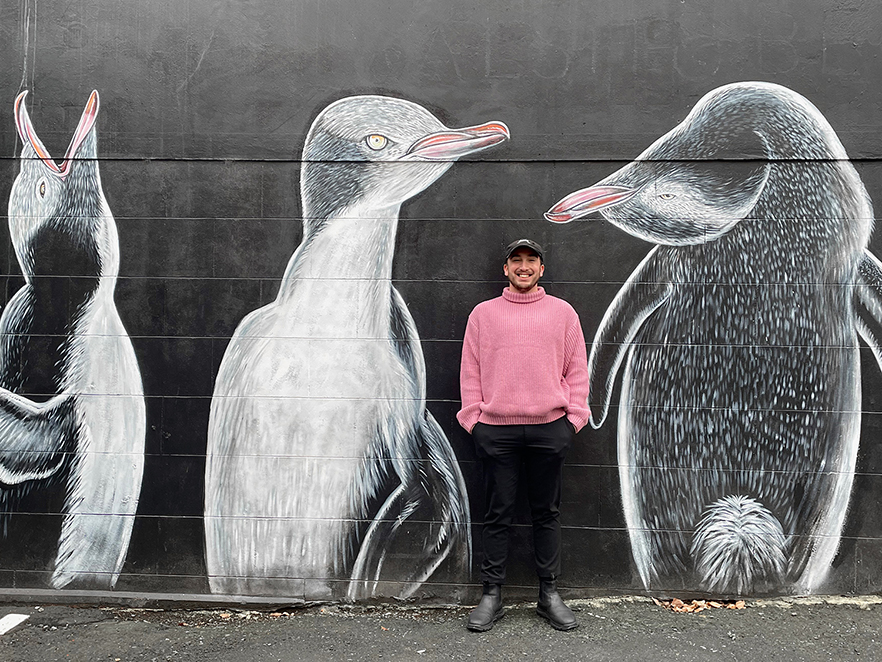
Lead author, Mr Thor Elley
New research tracking yellow‐eyed penguin foraging behaviour in Stewart Island has built a detailed picture of their marine distribution that could inform measures to reduce the risk of local extinction.
The study by postgraduate student Thor Elley from the University of Otago’s Department of Zoology, involved detailed tracking of the foraging behaviour and patterns of 19 adult yellow-eyed penguins across three Stewart Island locations including Port Pegasus, Paterson Inlet, and Codfish Island.
Yellow-eyed penguins on Stewart Island have been the least researched remaining population on the New Zealand mainland. The endangered penguin has experienced a dramatic decline in population numbers, with those on Stewart Island reducing from an estimated 154 pairs in 2008/09 to around 44 in the most recent breeding season.
During the 2020/21 breeding season, 19 adult breeding yellow‐eyed penguins across the three sites on Stewart Island were fitted with GPS dive data loggers to track movements and diving behaviours, which resulted in the recording of a total of 25,696 dives across 91 foraging trips.
The study recently published in the journal Biology, shows that while foraging ranges and trip lengths were substantially different between the sites and dependent on a range of factors, the behaviour of birds from the same site were surprisingly consistent.
“At each of the three locations, individual behaviour and preferred foraging locations were extremely predictable and consistent between feeding trips,” Mr Elley explains.
“This predictability produces robust estimations on what size and shape marine protection measures should be, as well as managing local fisheries to reduce overlap with preferred foraging locations of yellow-eyed penguin.”
Stewart Island is home to approximately a quarter of all yellow-eyed penguin breeding across their mainland range, and the loss of one adult can have significant implications for population numbers.
“Fisheries related mortality can have massive flow on effect during breeding seasons, such that if an adult dies, both dependent chicks usually starve, and the surviving breeding partner will likely skip the next breeding season.”
Set netting restrictions in place adjacent to the South Island reduce the risk of entanglement and death within the four nautical mile exclusion zone, however no restriction on set netting is in place for Stewart Island and its outlying islands.
“Unfortunately, set net effort peaks in summer, which coincides with the yellow‐eyed penguin breeding season,” Mr Elley says.
“These fisheries overlap with the preferred foraging locations of yellow‐eyed penguins and current set netting practices both within Pegasus Inlet and in the waters along the coast could quite possibly mean local extinction is likely unless we re-think inshore fishing practices.”
Co-author and supervisor for the study, Professor Phil Seddon, says new technology used in the study highlights the potential it can make to increasing our understanding of species behaviour.
“Not so long ago the at-sea distribution of yellow-eyed penguins was largely a mystery to us, but now, with miniature tracking devices, we are gaining a detailed picture of their marine distribution, a realm where the penguins spend most of their time,” Professor Seddon says.
“Improved understanding of the foraging range and feeding behaviour of yellow-eyed penguins will inform management, marine spatial planning, and other measures that can reduce the risks faced by this iconic living treasure.”








